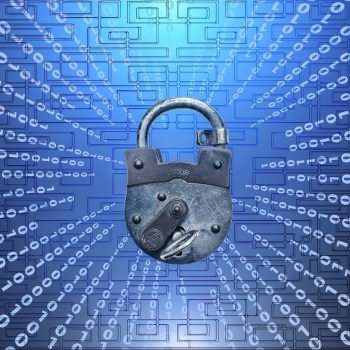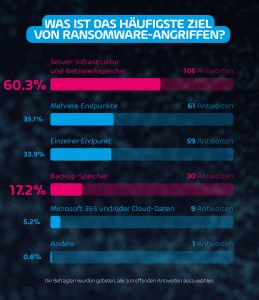
A recent survey by the cybersecurity experts at Hornetsecurity among more than 820 companies found that 21% of those surveyed have already been victims of a ransomware attack. Every 10th company paid the ransom.
Ransomware is one of the most common and effective forms of cybercrime. Attackers encrypt a company's data and make it unusable until a ransom is paid.
Over 9% of the ransomware victims surveyed paid the ransom
Of the 21% of companies that reported a ransomware attack, 9,2% were able to recover their data by paying the ransom. The rest of the respondents used backups to restore the encrypted files, but some reported that data was also lost in the process.
According to the results, companies with 201-500 employees reported the most ransomware attacks (25,3%), while companies with 1-50 employees reported the least (18,7%). Geographically, 19,6% of North American companies reported attacks, while 21,2% of companies in Europe were affected.
Backups unprotected from ransomware
15,2% of all survey participants stated that their company does not protect their backups against ransomware. The survey also found that 17,2% of reported ransomware attacks were targeted at backup storage. These results are cause for concern: standard on-site backups do not provide 100% protection against ransomware attacks. In fact, backups must be protected from ransomware attacks using methods such as off-site, “air gapped” storage or immutable storage - two protection methods often cited in this survey.
Also, 15,9% of respondents reported that they do not have a disaster recovery plan, which means that they are typically not prepared or equipped to deal with an attack.
Almost a third do not train their employees
Employees are one of the most successful gateways for ransomware attackers. Social engineering techniques such as phishing manipulate users in such a way that they smuggle malware into company systems. According to this survey, more than one in four companies (28,7%) do not train their employees on how to identify and deal with potential ransomware threats.

28,7% of the companies do not train their employees on how to recognize ransomware attacks (Image: Hornetsecurity).
Over 70 percent adapt to the dangerous situation
71,3% of organizations changed the way they back up their data in response to the growing ransomware threat. The two most common forms of protection identified in the survey are endpoint detection software with anti-ransomware capabilities (76,6%) and email filtering and threat analysis (76,1%). Air gapped offsite storage is reported to be used 47,9% of the time - a small percentage considering how effective the method is in delivering extraordinary data recovery.
More at HornetSecurity.com
About Hornetsecurity Hornetsecurity is the leading German cloud security provider for e-mail in Europe and protects the IT infrastructure, digital communication and data of companies and organizations of all sizes. The security specialist from Hanover provides its services via 10 redundantly secured data centers around the world. The product portfolio includes all important areas of e-mail security, from spam and virus filters to legally compliant archiving and encryption, to defense against CEO fraud and ransomware. Hornetsecurity has around 200 employees at 12 locations around the world and operates with its international dealer network in more than 30 countries.

